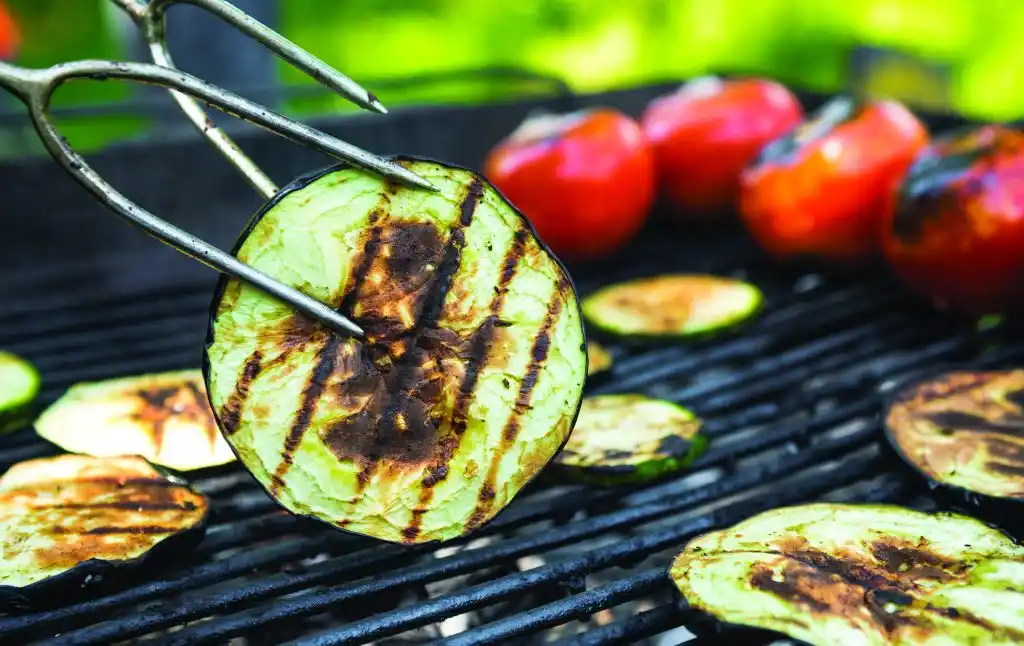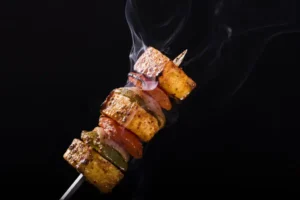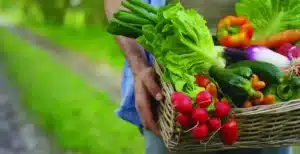
and feel the air on their skin. For backyard grills, it’s the tarps or tapered covers that have (hopefully) kept them protected from the Colorado winter.
Grilling is a signature of the season, beloved because it’s fast, doesn’t heat up the kitchen and makes food taste great. Burgers and brats and all manner of meats are the most obvious meals to reach for. But smoke and fire can transform the bountiful summer produce from something you consume for nutritional value into a food you eat for pure joy.
“I love grilling,” says Aaron Lande, the executive sous chef at Academy Boulder, a senior living campus. “Grilling brings out the greatest expression of a vegetable — the sweetness, the aroma, the complexity.”
While grill lines look good and impart a certain flavor, you can’t just throw a rutabaga on the gas or charcoal heat and assume it will taste dreamy. Here are Lande’s hacks for elevated summer produce, honed during thousands of hours of grilling at Boulder-area restaurants such as Eridu, Lucky Pie, Blackbelly and Laudisio.

Choose your grill: “I love charcoal, just because of the flavor you can’t get otherwise. The critical thing is to let the charcoal burn down until it’s glowing red,” Lande says. For practical reasons, most backyard cooks will opt for gas grills.
High heat always: Whether charcoal or gas, the single absolute rule is that the grill must be “screaming hot,” according to Lande. “You can hear a real sizzle as soon as you put anything on there. If you grill over low or medium heat, you won’t get that flavor and char. That’s the whole point, right?”
Skip the smoker: They’re great for proteins, but not for most vegetables except for brief exposure. “It has to be really quick, or they absorb too much smoke.”
“Whatever you do,” Lande advises, “avoid Liquid Smoke,” a bottled flavor substitute often used on meats. An easy way to add a hint of smokiness is using a high-quality smoked salt.
Salt, pepper and oil: That simple trio is all you need to quickly grill favorites like asparagus, baby artichokes, scallions, pre-cooked Yukon gold potatoes (for potato salad), yellow onion slices, broccolini and baby bok choy.
Oil is essential when grilling. “You want the same amount of cooking everywhere on the vegetable, and oil facilitates it,” he says. Sunflower oil is Lande’s favorite because it doesn’t burn, unlike olive oil. Save the good olive oil to dress and finish veggies post-grilling.
A common error is under-seasoning. Be sure to apply salt and pepper before and after grilling, he adds.
Rubs versus marinades: Seasoned spice rubs can be used lightly before grilling, and marinades like a basic vinaigrette dressing are an easy way to add additional flavor. Tweaking those spices determines where in the world you are grilling. Lande notes the central role vegetable grilling plays is so many cuisines — Italian, Spanish, Greek, Indian, Mexican and Thai.

Summer squash: Zucchini and other summer squash varieties are perfect for grilling and are sponges for flavor. Lande recommends grilling quarter-inch lengthwise squash slices to expose more surface to the heat. Squash has to be grilled over high heat and quickly removed.
Eggplant: There are two eggplant options: Long, thin whole or halved Asian eggplant grill quickly and don’t need to be peeled. The insides are soft and savory.
Classic Italian eggplant must be peeled. Lande recommends salting half- to three-quarter-inch eggplant slices before draining for an hour in a colander. “Give them a squeeze and then add oil, salt and pepper before grilling,” he says. Try eggplant slices in eggplant Parmesan with fresh mozzarella, grated Parmesan and basil leaves.
Iceberg and romaine lettuce: Much-maligned iceberg lettuce is wonderful on the grill. Oil and season a half head and sizzle for a few minutes before you compose that wedge salad with grilled croutons.
To grill romaine for caesar salads, wash, dry and trim off the stem bottom. “Cut the head in half, season, and place on a hot grill until you get those nice grill marks but retain the crunch,” Lande says.

Sweet corn: One word — “Olathe” — signals summer to Coloradans. There are two ways to grill whole cobs. For simple corn on the cob, peel back the husk, strip off the silk, rub the cob with butter and seasonings and then grill for about five minutes.
For corn salads, charred corn salsa or Mexican street corn (elote), remove the husk, oil and season it and cook until grill marks appear.
Tomatoes: Extremely firm larger tomatoes, red or green, can be grilled in thick slices for burgers. Lande suggests grilling sweet little local cherry tomatoes whole on the grill before adding them to salads.
Chiles: Small sweet peppers can be de-seeded and grilled whole. Bell peppers grill best in quarters or on kebobs. Grilling hot chiles (from Anaheims to habaneros) make it easier to remove tough skins before using in various dishes.
Peaches and cantaloupe: Sweet, juicy Palisade peaches and Rocky Ford melons can also be grilled. Lande loves to serve grilled peaches with burrata cheese and aged balsamic vinegar. Grilled fruits can also be used in fruit salsas.
